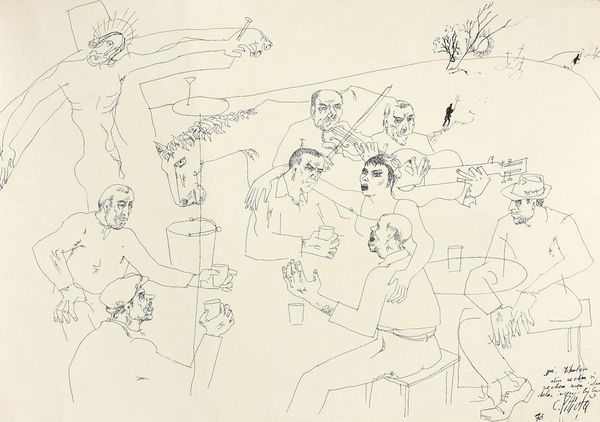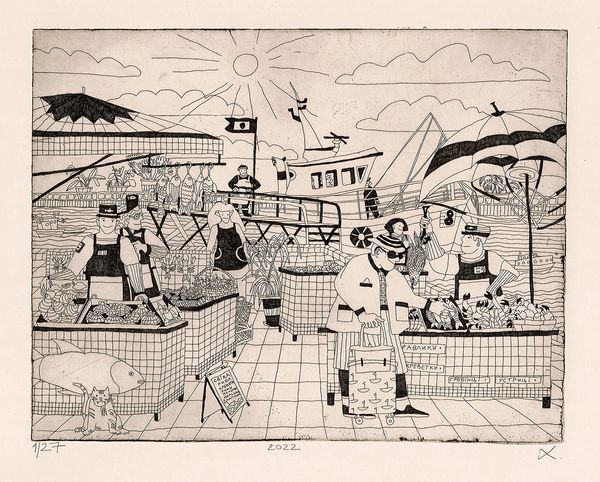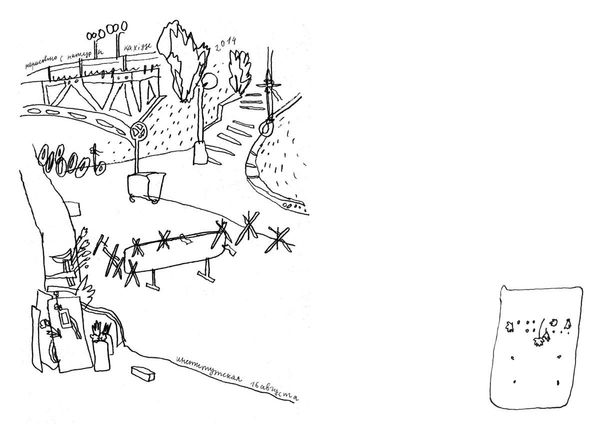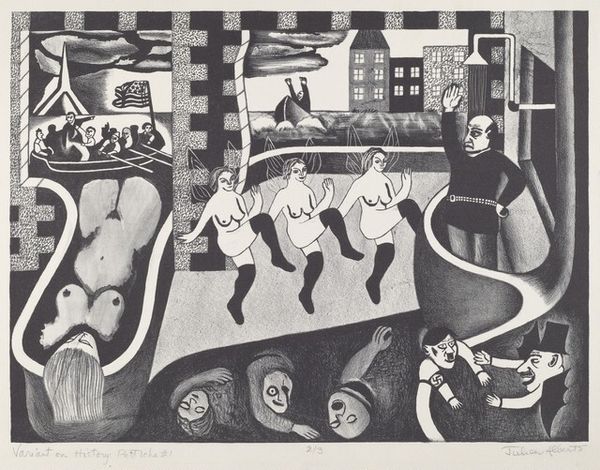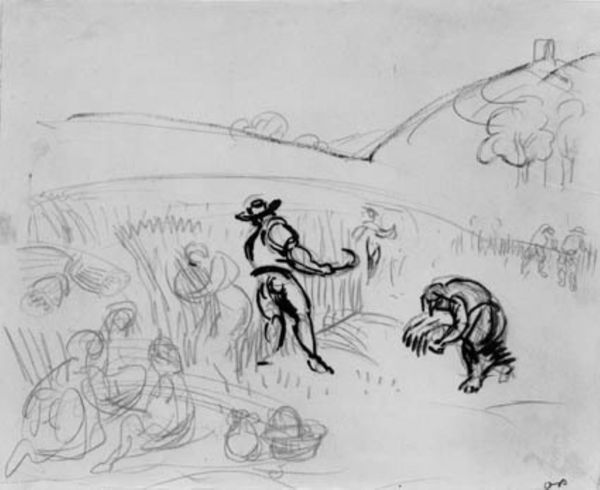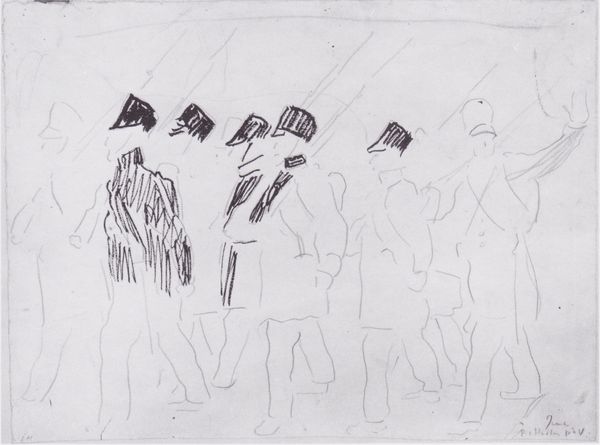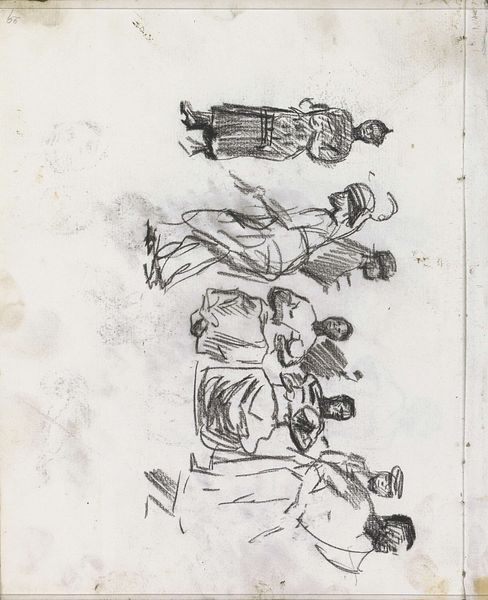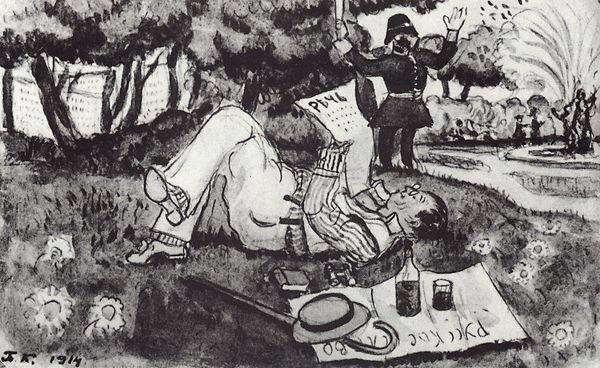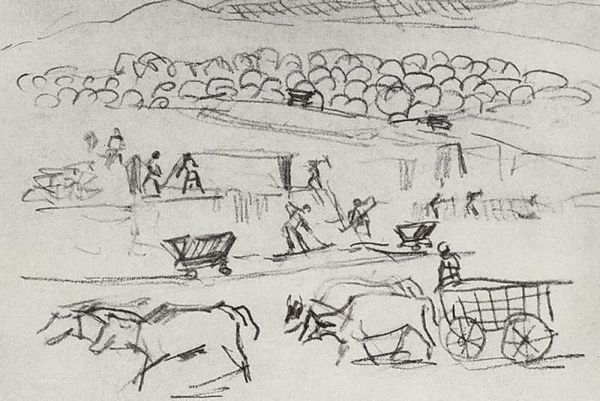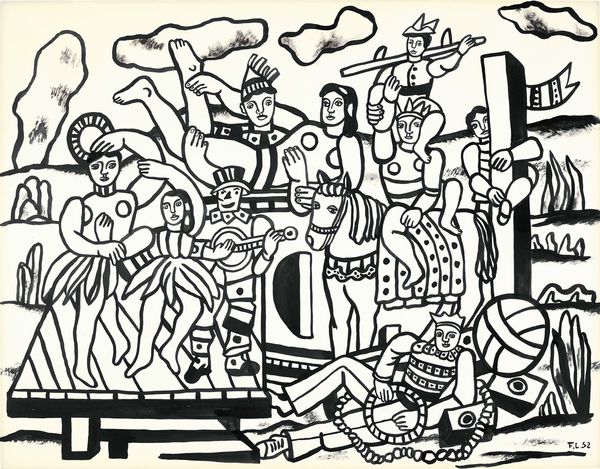
drawing, ink
#
drawing
#
comic strip sketch
#
quirky sketch
#
narrative-art
#
figuration
#
personal sketchbook
#
linework heavy
#
ink
#
idea generation sketch
#
sketchwork
#
thumbnail sketching
#
sketchbook drawing
#
storyboard and sketchbook work
#
sketchbook art
Copyright: Candido Portinari,Fair Use
Curator: Today we’re looking at “Índias”, a drawing by Candido Portinari, rendered in ink. Editor: It’s raw. You can practically feel the energy of the artist sketching this out. There’s a certain primitive quality in the heavy linework, and how the figures are placed, almost haphazardly. Curator: Portinari’s works often acted as social commentary, a lens through which to view the lives of ordinary Brazilians and historical inequities. “Índias,” which translates to "Indian women" or “Indigenous Women,” touches on representations of native peoples. It comes across almost like a set of scenes documenting their way of life. Editor: Visually, the high contrast is striking. The white space feels active. Your eye jumps from the women tending large pots to other scenes – almost like frames in a comic strip – someone precariously balanced on a fence, figures lounging and embracing. I’m intrigued by the large pots, the central focus in each cluster of figures. Curator: I agree. The pots signal sustenance and gathering, they were used to prepare manioc or cassava which formed a diet stable in the indigenous diet. Beyond nutrition, we must consider that these vessels carry deep historical weight, these actions are charged as a consequence of colonialism, displacement, and erasure. Portinari gives them dignity. Editor: It makes me consider the dynamic between labor and leisure within this community. Some are working while others are at rest. It all contributes to this feeling of an animated scene unfolding before us. Curator: And within a fraught political reality. Consider also Portinari's engagement with political movements. While known for his communist affiliations, Portinari engaged with diverse cultural and political discourses, some even embracing the government's calls for nationalist artwork and the idealization of nationhood during the Estado Novo period in Brazil. Editor: Seeing it through a formal lens allows appreciation of the composition first, I would say. It invites you to analyze the raw beauty inherent in the line. Curator: It's certainly complex. Thanks for pointing out the visual rhythm, I believe our viewers can see how it mirrors some of the ongoing discussions around Indigenous representation within Brazilian art and society, past and present. Editor: Indeed, seeing both helps uncover different facets, it deepens the experience of looking at it.
Comments
No comments
Be the first to comment and join the conversation on the ultimate creative platform.

